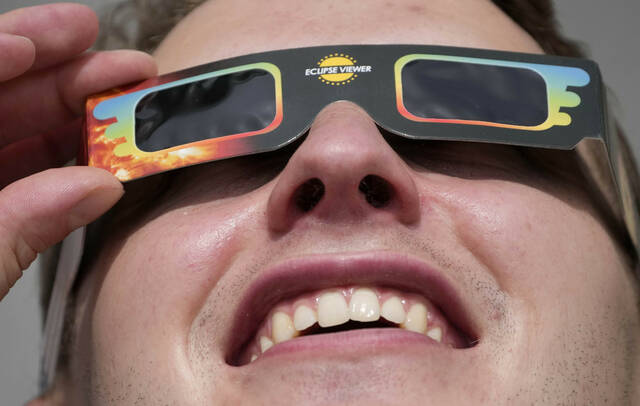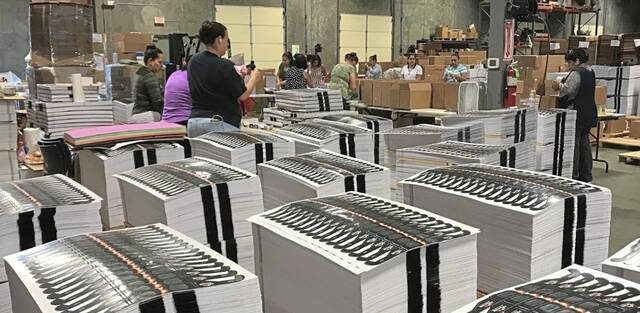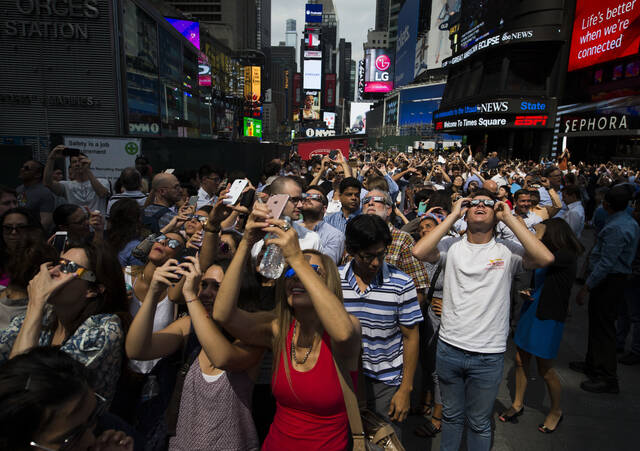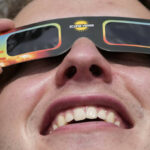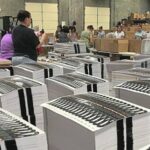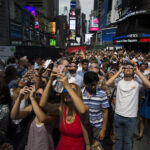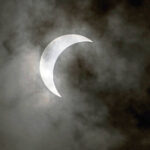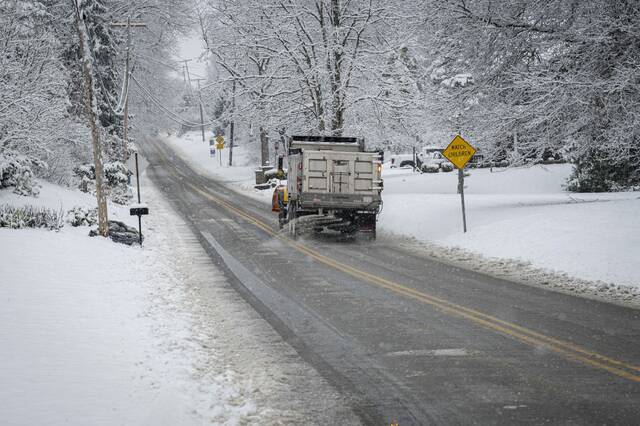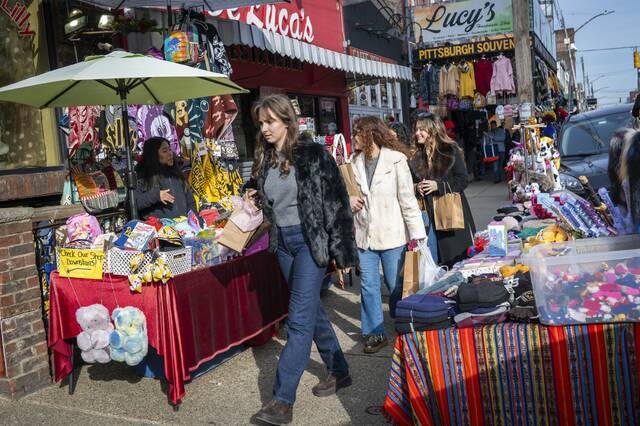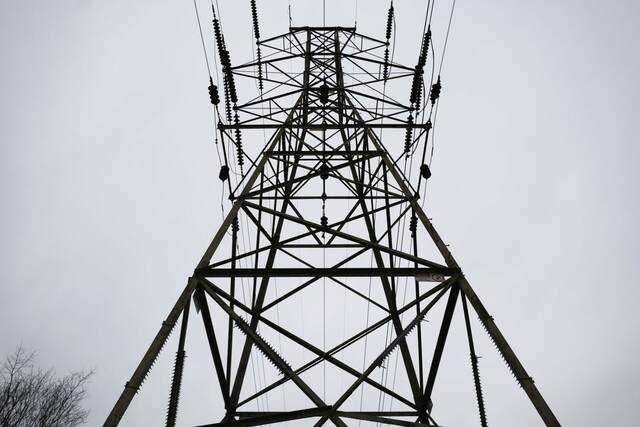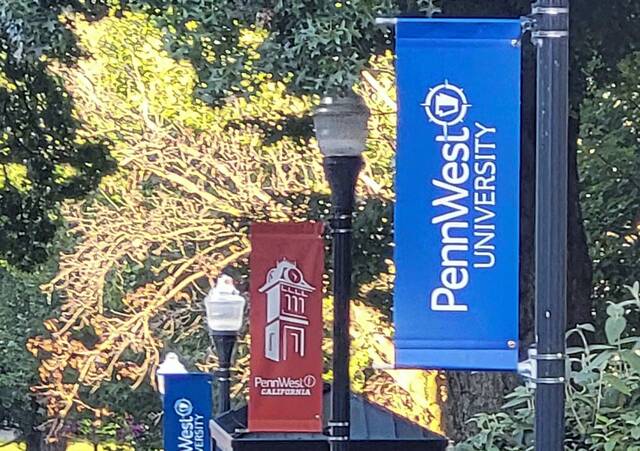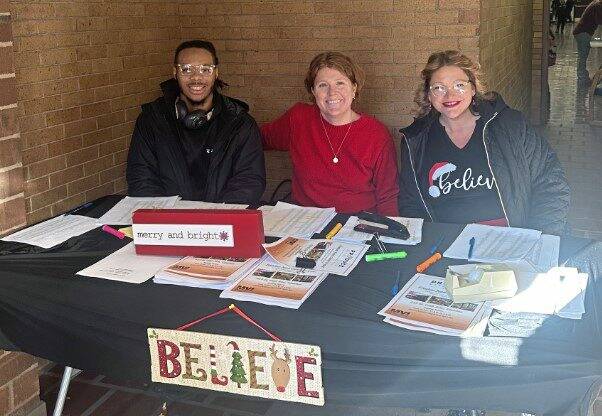You don’t become the world’s leading manufacturer of paper glasses by being unprepared.
That’s why employees at American Paper Optics, tucked into a corporate office park in the southwest corner of Tennessee, have been busy for the past two years preparing for the April 8 solar eclipse.
“We’ve been doing eclipse glasses for more than 20 years,” said American Paper Optics co-owner Paulo Aur. “We’ve made more than 3 billion pairs of paper glasses.”
Hundreds of thousands of those glasses will be in use in Erie, which lies along the path of a total eclipse.
The reason for the glasses is simple: Staring at the sun for any significant length of time will damage your eyes. According to the American Academy of Ophthalmology, sunlight focused on the retina can cause permanent damage in less than a minute.
Academy officials said that’s because the human eye is essentially a magnifying glass, focusing light that is then interpreted by the brain to create images. They compared it to using a magnifying glass to burn a hole in a piece of paper. The lens of the human eye, in fact, is about four times as powerful as a magnifying glass.
Enter the eclipse glasses.
The American Astronomical Society’s eclipse website breaks down the requirements set by the International Organization for Standardization for creating the fairly simple paper viewing glasses. Adopted in 2015, ISO’s 12312-2 standard applies worldwide and supersedes a wide variety of national and regional standards.
It governs the transmittance of light at the ultraviolet, visible and infrared wavelengths that can reach the eye’s retina.
According to the ISO, the “maximum luminous transmittance” of visible light can be no more than 0.0032%.
Before the advent of paper viewing glasses, AAS officials said astronomers would typically use welding filters to view an eclipse. The ISO maximum standard corresponds roughly to a level 12 welding filter.
The AAS also maintains a list of reputable vendors for purchasing eclipse glasses, which includes American Paper Optics.
Aur said most companies, including his, source their ISO-certified filters from Thousand Oaks Optical, an Arizona company that has been making solar filters and films for more than 35 years.
“That’s all they do, is make the lens material and camera filters for looking at the sun,” Aur said.
Considering American Paper Optics’ massive industry presence, it should come as no surprise that it manufactured the 500 pairs of eclipse glasses in Murrysville Community Library Director Amy Riegner’s office.
“I follow the STAR Library Network, and they sent out a release about the eclipse and how to order glasses,” Riegner said. “We ordered 500, which is the maximum you can receive. They’re a hot commodity.”
Through a grant from the Gordon and Betty Moore Foundation and funding from NASA, the STAR Network will distribute more than 5 million pairs of eclipse glasses to U.S. libraries.
In addition to an eclipse viewing party on April 8, the Murrysville library will host a March 19 presentation by Knights of the Classroom focusing on the eclipse. They also will begin distributing eclipse glasses at the March event.
One thing both Riegner and Aur emphasized: Don’t try to make your own viewing glasses. For starters, getting your hands on properly ISO-rated filters will not be easy two months before a large-scale eclipse event. That’s why Aur and his company began preparing back in 2022.
Experts disagree on whether eclipse glasses manufactured around the time of the August 2017 solar eclipse are safe to use for this year’s event. Materials could break down if they weren’t stored correctly or if they have scratches, bends or tears. Most agree it’s better to be safe than sorry and purchase new glasses for the upcoming eclipse.
When it comes to providing the glasses, Aur said, American Paper Optics has a leg up on its competition because its manufacturing is all done in-house.
“Our main competitor outsources its manufacturing,” Aur said. “We can ramp up quickly here. Whenever there’s a total eclipse like this, we’ll triple our work stuff, and there’s definitely a boost in production. We’ve been inundated with calls and emails.”
American Paper Optics sells a set of 25 basic glasses at $2.35 each, for a total of $58.75. Fancier “space cowboy” specs are available at four for $5.95 each, or $23.80.
One thing eclipse watchers can make is a pinhole viewer, typically created using a shoebox or cereal carton that projects an image of the sun — and the moon crossing into its path — in a way that will not harm the eyes. See the breakout box or the video below for instructions on creating a viewer.
Make sure to get a peek somehow — the next total eclipse to cross the continental U.S. won’t take place until 2045, according to NASA.


